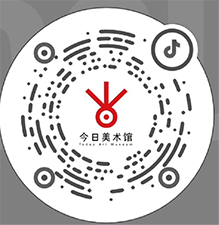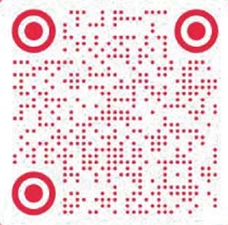Tong Zhengang (born 1959) is not like most contemporary Chinese artists who have gone through vigorous art trainings in college. Born in Xinjiang and growing up on the oil fields, he was destined to become a petroleum worker. It was his love for art and his talents in calligraphy and seal inscription that took him out of the fate of an industrial worker. He was indeed trained at a college setting, first at the PLA Art Institute, and then at the Central Academy of Fine Arts. But he was not in a degree program and the trainings were informal. This unique background has made him the kind of artist he is, with the following noticeable characters:
1.Tong Zhengang has always had the charisma of an industrial worker, who is generous, friendly, outgoing, optimistic, and mentally and physically tough.
2.Unlimited and unrestrained by any existing schools or styles, Tong Zhengang is always keen on developing his own personal styles.
3.Tong Zhengang’s individual styles are not restricted by the divide between tradition and modern, or between Chinese style and Western style.
4.Tong Zhengang is also not limited by difference in media. He is equally at home with the brush and ink, oil painting, woodblock print, and sculpture.
These characters have made Tong Zhengang one of most unique contemporary Chinese artists, one who is genuinely capable of uniting the traditional with the modern, calligraphy with painting.
Tong Zhengang began to write the Heart Sutra since 2011. Why the Heart Sutra? First of all, rarely has anyone experienced as difficult a three-year stretch as Tong did. Between 2007 and 2009, he first broke his leg bone, and then damaged his spine, before he had his life’s savings stolen by a close friend. As a result of these sufferings, he fell into a slump. The eternally optimistic artist, however, was able to climb out of the slump by thinking about reciprocity. “The connection between cause and effect must never be doubted,” as he was reminded by the Heart Sutra. Reflecting upon his life and career prior to the three-year slump, Tong Zhengang realized that the biggest obstacle toward his freedom and liberation is allure. Allure is the most difficult obstacle among the six paths of suffering. The Heart Sutra can help clear the obstacles on the six paths. Tong came to the understanding that what matters is the process of combining writing and configuration, not the scripts themselves. He found that tight constructions of scripts are best for the manifestation of human figures. The Heart Sutra, therefore, became the key to Tong’s effort in combining the soul with art.
The most important principle that the Heart Sutra teaches is emptiness:
By means of his minutely subtle Dharma practice, he penetrated the five skandhas, perceiving them as empty. The five skandhas – namely, form, feeling, conception, volition and consciousness – continually provide five occasions for craving and clinging. Two types of craving and clinging characterize the human mind: craving and clinging to form and craving and clinging to mind.
The usual misunderstanding of emptiness is to equate emptiness with the state of being empty. Being empty is precisely a form, a feeling, a conception, a volition, and a consciousness. Without the concept of being empty, then, how can anyone imagine emptiness?
Tong Zhengang has grasped this dilemma: he tries to “find connections with Zen through ‘allure’”. What he implies is to thoroughly enjoy allure, the lure of sexual desire and desire for food, before the epiphany of Zen strikes. In terms of form, he manifests his working-through in fullness. He would densely write down all 268 characters in the Heart Sutra on a scroll, paint the scroll white, before he allows images to float up from the scripts. To be empty, therefore, is to be full first in form. To overcome allure is to be lured first.
The result of Tong Zhengang’s working-through is an aesthetic effect similar to yugen, one of the most important aesthetic principles in Japanese art, calligraphy, literature, and everyday life. Roughly translated into “profoundly graceful,” yugen denotes a speechlessness in the ways in which we are touched by the simple beauty of nature. The fleeing moments of being touch by the graceful is ultimately unspeakable, and this is precisely the meaning of empty in the Heart Sutra.
Tong says, in his autobiography, that 1993 marked the important changes in his styles. He changed his style radically, influenced by the likes of Japan’s Shiko Munakata (1903-1975), Yumeji Takehisa (1884-1934), Mondrian, and Egon Schiele (1890-1918). The new series, the “Green House” ink paintings, was a breakthrough because it is neither of traditional Chinese styles nor of Western techniques. Traditional Chinese literati paintings rely on dispersed or multiple perspectives and present mainly long and medium range scenes. Western paintings mainly of perspective drawing and have only one focal point. Tong Zhengang in his new series tried to combine median and long range multi-perspectives with the close-range presentation of the human figure. These styles are even more mature and pronounced in the Heart Sutra paintings.
Shiko Munakata, modern Japan’s most important print artist, might be Tong’s biggest inspiration, especially in the ways in which Munakata drew the figures of beauty and juxtapose paintings with calligraphy. These are surface similarities. More importantly, the two artists also share the same idea about art. Munakata once said,
Feelings and senses are indeed important to artists. But these are not always reliable. We must try our best to grasp yugen, the spirit or aura that is ever so fleeting. To achieve this, we need not only superb instincts, but also an extraordinary ability in our skills. These skills cannot be acquired if not for tremendous hard work and endless repetitions.
Munakata’s ideas about art are similarly to the lessons taught in the Heart Sutra and to Tong’s understanding of what the emptiness truly is. The senses are only on the surface; we need to lose them before we can achieve epiphany, the unspeakable moment of emptiness devoid of any concept of feelings and sensations. To achieve epiphany, however, skills acquired on the basis of endless repetition and hard work are necessary.
Through endless repetitions of writing the scripts of the Heart Sutra, Tong Zhengang has achieved multiple goals in one act: he is able to enjoy the process, not the result; he trains his skills and thus becomes ready for the moment of epiphany; and he is cured of his pain in the therapeutic function of sutra recitation. The sincerity and the understanding of visuality Tong Zhengang shows in working through the Heart Sutra are unmatched in contemporary Chinese art.











